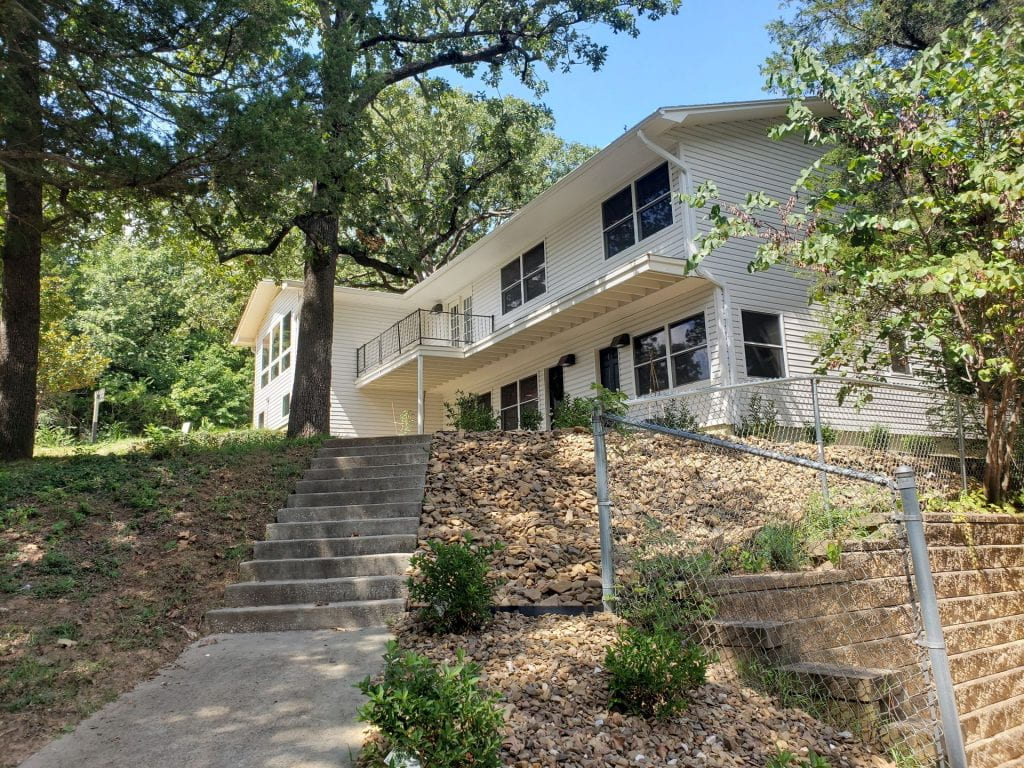UA Occupational Therapy Program to Launch in January 2020
COEHP is starting an occupational therapy program in partnership with UAMS. Along with new curriculum and staff, the department remodeled a house which will be used for lectures and training.
By Kirsten Baird
The Razorback Reporter

The UA faculty of the Occupational Therapy clinical doctorate program will welcome students in January 2020, the program director said. The program will use the newly renovated O.T. house, as well as the University of Arkansas for Medical Sciences campus on College Avenue.
This will be the first joint program between the UofA and UAMS, director Sherry Muir said. Fran Hagstrom, Ph.D., an associate professor of communication science and disorders got the program approved by the state Legislature and recruited Muir as program director, a university representative said.
The Accreditation Council for Occupational Therapy Education currently accredits over 570 O.T. programs within the United States, four of which are located in Arkansas, according to the American Occupational Therapy Association. The UofA currently stands at candidacy status, but in order for students to take the national exam, they must graduate from an accredited program, Muir said.
In the third year of the program, the ACOTE will visit the campus, interview students and faculty, and determine whether the program can receive accreditation status.
Meanwhile, renovations on the occupational therapy house were completed in June, and the 7,000 square feet of lab space at UAMS was completed October 1, Muir said.
The O.T. house has a variety of functions. It can be used for small seminar classes, lectures, and about 50 percent of hands-on active learning, Muir said.
“This house was designed to be a real home and not handicap accessible,” Muir said. “It’s on a hill, it has bad sidewalks that are broken, it has stairs.” Muir said that the faculty and staff believe that if students are to truly be problem solvers, it is important for them to understand that patients go home from an injury to a real home.
Thus, the faculty and staff within the department aim to build a program that instills both this view within their students and changes the way people view occupational therapy as a field.
When it comes to occupational therapy, people “have either never heard of it, or they have a very tiny limited view of it,” Muir said. Occupational therapy requires knowing the needs, wants, and daily requirements of an individual, which vary with age.
Occupational therapy “is very broad, and our training is very broad so that makes it hard for people to understand,” Muir said. “And I think we, as a profession, are significantly at fault because we haven’t been able to clearly articulate what we do.”
“We can build a very different kind of program, and I think we have,” Muir said. “I think it is highly unusual in that we did a backwards design for the entire curriculum.”
“We began at the end, but it is also fully integrated,” Muir said. “If our courses are integrated, the student’s knowledge will be more holistic and you won’t think of yourself as a pediatric therapist or an adult therapist. You will think of yourself as an occupational therapist.”
Muir hired faculty members who are innovative thinkers, do unusual types of practice, and are pioneers within their area. She hopes that the design of the O.T. program will develop students that expand the scope of their practice and be leaders in their own areas.
Establishing this program also aids in “making degree programs more robust, helping to highlight the fact that one area cannot thrive without some understanding of the other,” research assistant Charlene Reid said. “There needs to be greater collaboration among the various departments to better reflect the importance and need for each other in our respective fields.”
The new faculty and staff within the OT Program already are starting on a trajectory toward redefining how Occupational Therapy is viewed as a field, Muir said.
“I have a passion for this profession, and I believe that we are underutilized, and I believe that we are the missing link in many social crises like mental health issues, like the opioid addiction, like this exponentially increasing rise in young people’s anxiety and depression,” Muir said.
Muir’s biggest desire is for this integrated curriculum to prepare students to meet the diverse needs of society. She thinks that occupational therapy can have an impact on the world if they are fully utilized.
“I want our students to feel empowered to go out there and forge new paths and make a difference, not only in our country, but maybe in the world,” Muir said.
